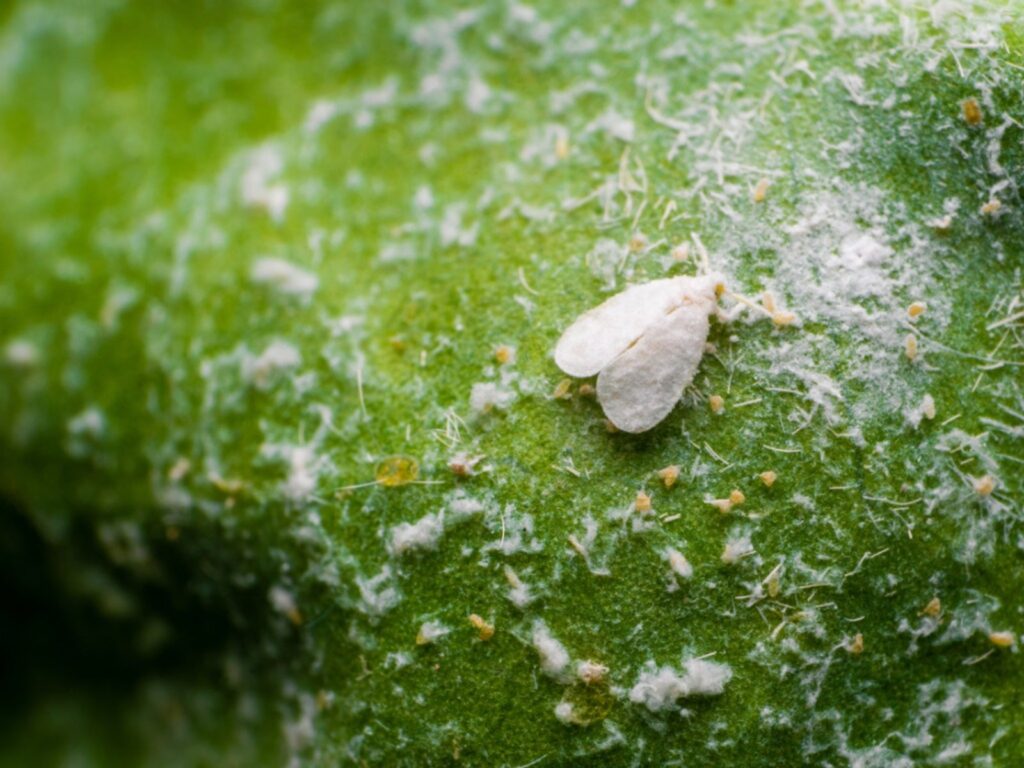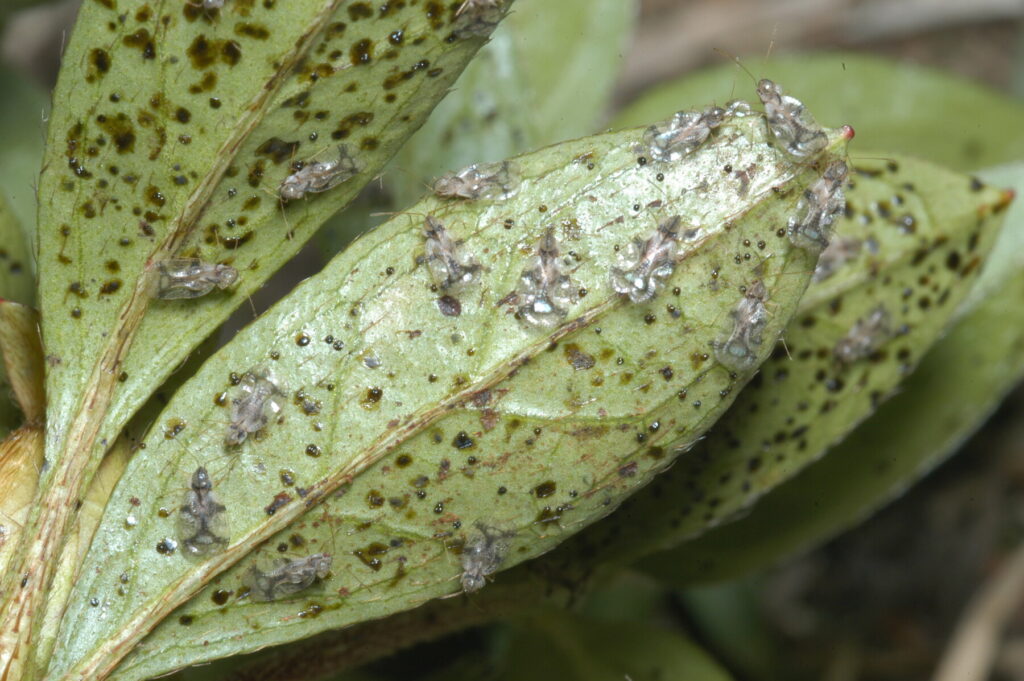Our yards and gardens generally look a little frayed around the edges by this time of the year. On top of heat stress, plants also are more vulnerable to insect and disease problems now.
Heat stress takes its toll on just about everything in our landscapes except the tropicals. The final really hot days that usually come at the end of a long, hot summer are especially hard on plants.
Worse yet, plants experiencing heat stress are weakened, and that means we often see an increase in disease and insect problems at the end of the summer. So you should be on the lookout for pests such as lace bugs, aphids, leaf hoppers, scales, spider mites and whiteflies.
One of the worst pests of late summer is the whitefly, a small white insect that is a little bigger than a gnat. Clouds of them will fly up from a heavily infested plant when it is shaken. Both the adults and the immature whiteflies feed on the plant by sucking the sap from the foliage. Infested plants will have a sickly appearance and dull leaves. A black deposit called sooty mold often appears, and leaves may turn yellow and fall off. (Sooty mold may also be caused by other sucking insects such as aphids and scale.)

Whiteflies are somewhat selective in what they feed on – often infesting hibiscus, cleome, lantana, mallow, poinsettia, gardenia, Confederate rose and many bedding plants. When spraying, pay especially careful attention to thorough coverage on the most heavily infested plants. Repeat applications as necessary.
Plants heavily infested with whiteflies also may be cut back to reduce population levels. Just be sure to discard the clippings. In addition, as a last resort, low-value landscape plants – such as bedding plants – may even be pulled up and disposed of.
Controlling whiteflies can be difficult, especially when the population levels get high. On ornamentals you can use Talstar, Malathion, or acephate. Although oil sprays are not recommended for use in summer when daytime highs go above 85 degrees, highly refined paraffinic insecticidal oils, such as Bonide Year Round Oil, can be used now and are very effective against whiteflies. Oils kill by suffocation and are an excellent low-toxicity insecticide. Spray in the early morning when it is cooler. Check the label carefully for the safe and proper use of these pesticides and the listing of plants on which they may be used.
Many vegetables in the garden now also are susceptible to whiteflies. Those include tomatoes, eggplants, okra, sweet potatoes, beans and others. Malathion, Bonide Year Round Oil, insecticidal soap and Thiodan should help reduce populations, but repeated applications may be necessary. Follow label directions carefully and note the waiting period between application and harvest.
Another pest, the stinging caterpillar, often is around in the landscape in late summer. The tan, furry puss moth caterpillar, the square-shaped, brightly colored saddleback caterpillar and the chartreuse green, spiny IO moth caterpillar feed on a variety of plants. Stinging caterpillars produce a very painful burning, itching sting when touched. The irritation is caused by hollow, venom-filled spines that puncture the skin and release the venom into the wound. Children should be cautioned against touching any caterpillar.



Stings most commonly occur on hands or arms as gardeners work among their shrubs. Wearing gloves and long sleeves will help prevent stings. To control these pests, physically destroy as many as you can see. (Knock them to the ground and step on them.) Then spray the plants with Bt (Dipel, Thuricide, Biological Worm Control), Sevin, acephate, permethrin, bifenthrin or cyfluthrin.
Azalea lace bugs are a leading pest on azaleas and are active in late summer and fall (as well as spring). The damage they cause appears as small, white dots on the upper leaf surfaces, becoming so numerous that the leaf may take on a faded or tan color. Lace bugs have piercing-sucking mouth parts and feed primarily on the underside of the foliage. Turn a leaf over and look for dark brown, shiny spots to confirm lace bug activity. Control this pest with Bonide Year Round Oil, Malathion, Talstar or acephate.

Numerous types of scale attack a variety of plants. They often go unnoticed since they do not really look like insects. They are covered with a protective shell and do not move once they settle on the plant. They may appear as white, brown or tan dots, dashes or bumps on the foliage or stems of plants, and they detach easily when pushed on with your thumbnail. Systemic insecticides such as acephate, Merit and dimethoate or Bonide Year Round Oil are effective in controlling scales. Several applications will be necessary.

The heat causes enough stress for plants in our landscapes without them having to tolerate insect damage as well. So watch out for pest problems. Controlling them, when necessary, will help get your plants through the summer in good shape.